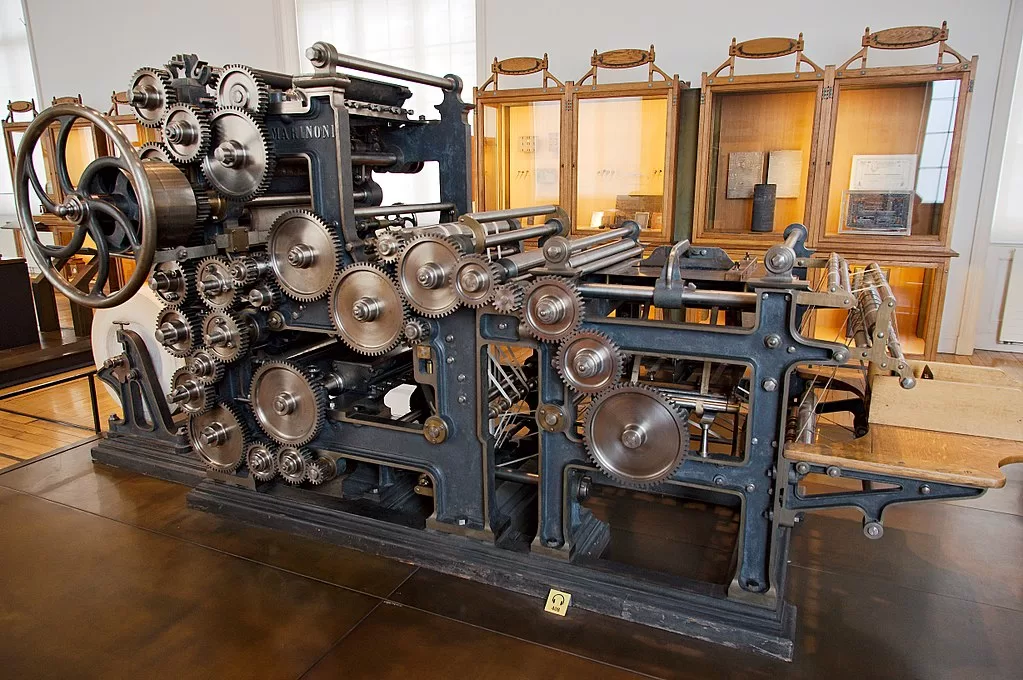This article is part of the FLEXO FLAW FIXING series
In the complex and intricate world of printing, achieving precision and quality is paramount. One of the critical factors affecting output quality in various printing processes, particularly flexography and rotogravure, is “repeat length”. Repeat length is essentially the cycle length of a printed pattern before it repeats itself on the substrate, be it paper, plastic, fabric or any other material. And it is a fairly common print defect that results from inconsistent repeat length in flexo printing. This article examines the nuances of repeat length, the reasons for its variation, and strategies for maintaining consistency to reduce print defects.
Repeat Length: A Primer
Repeat length is a fundamental concept in printing. It refers to the length of a single cycle of a printed pattern on a continuous substrate. It is essential to ensure that the printed design is perfectly lining up across the length of the substrate without any irregularities or misalignments. For example, in wallpaper or fabric printing, an inconsistent repeat length can lead to pattern mismatches. Defects as such significantly affect the visual aesthetics and result in material waste.
The calculation of the repeat length can be approached using different parameters depending on the type of printing process used. In general, it involves taking into account the pattern length (the direct measurement of the repeat unit of the design), circular pitch and diameter pitch, which are related to the print cylinder, among other factors. These are essential to ensure that the print is repeated accurately over the length of the substrate.
Accurate calculation of the repeat length requires knowledge of the press being used, including the specifications of the impression cylinder and the physical properties of the substrate. For a perfect repeat pattern, the repeat length must be an exact multiple of the circumference of the impression cylinder.
Causes of Inconsistent Repeat Length in Flexo Printing
Despite careful calculation and preparation, variations in repeat length can occur, resulting in print defects such as misalignment or overlap. Several factors contribute to this variation:
- Substrate tension
Uneven tension in the substrate during the printing process can cause variations in repeat length. Too much or too little tension can distort the substrate, causing the printed pattern to stretch or compress.
- Machine stability
Vibrations or instability in the press can affect the precision with which the substrate is fed through the rollers, affecting the repeat length. Regular maintenance and calibration of the press is essential to minimise these effects.
- Pressroom temperature and humidity
The ambient conditions in the pressroom can have a significant effect on the physical properties of the substrate. High humidity can cause substrates, especially paper or fabric, to absorb moisture and expand. Whilst temperature fluctuations can cause contraction or expansion, both of which affect repeat length.
Strategies to Avoid Inconsistent Repeat Length in Flexo Printing
There are a number of strategies that can assist in ensuring consistency of print and avoiding errors due to variable repeat lengths:
Substrate Management
Implementing pre-printing treatments to stabilise the substrate and using tension control systems during the printing process can help maintain a consistent repeat length.
Precision in Machinery
Investing in high-quality printing presses with advanced control systems can greatly enhance stability and accuracy, reducing the chances of variation in repeat length. Regular maintenance and calibration of the equipment are also pivotal.
Control of Ambient Conditions
Maintaining stable temperature and humidity levels in the printing room can mitigate the impact of environmental factors on the substrate and the printing process.
Technical Expertise
Training staff and operators to identify and rectify potential issues swiftly can prevent minor variations from leading to significant defects.
Conclusion
Repeat length plays a crucial role in the quality and precision of printed materials. Inconsistent repeat length in flexo printing, if unaddressed, can lead to significant visual and material defects, undermining the effectiveness and efficiency of the printing process.
By understanding the determinants of repeat length, acknowledging the factors that may cause its variation, and implementing strategies to maintain consistency, printing operations can minimise defects and achieve superior quality in their outputs. The intersection of technical innovation, environmental control, and skilled operation forms the foundation for overcoming the challenges posed by an inconstant repeat length, ensuring the production of flawless printed materials.

![[Flexo Flaw Fixing] Inconsistent Repeat Length](https://flexopedia.net/wp-content/uploads/2023/06/066_Repeat_Length-jpg-e1704202472468.webp)
![[Flexo Flaw Fixing] Washboard Effect](https://flexopedia.net/wp-content/uploads/2022/02/image3.jpeg)
![[Flexo Flaw Fixing] Mechanical Print Damage](https://flexopedia.net/wp-content/uploads/2022/07/69978309_0cdc9eb8b8_c.jpg)

![[Flexo Flaw Fixing] Gear Marks](https://flexopedia.net/wp-content/uploads/2022/07/Dirty_Marks-jpg.webp)